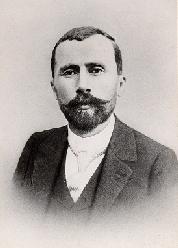<Back to Index>
- Meteorologist Léon Philippe Teisserenc de Bort, 1855
- Painter Pietro Longhi, 1701
- Prime Minister of France Charles Alexandre Dupuy, 1851
PAGE SPONSOR

Léon Philippe Teisserenc de Bort (November 5, 1855 in Paris, France – January 2, 1913 in Cannes, France) was a French meteorologist who became famous for his discovery of the stratosphere.
Teisserenc de Bort pioneered the use of unmanned instrumented balloons and was the first to identify the region in the atmosphere around 8-17 kilometers of height where the lapse rate reaches zero, known today as the tropopause. Between 1892 and 1896, Teisserenc de Bort was the chief of the Administrative Center of National Meteorology (a department of the French government) in Paris. After his resignation from this post he established a private meteorological observatory in Trappes near Versailles. There he conducted experiments with high-flying instrumented hydrogen balloons and was one of the first people to use such devices.
Teisserenc
de Bort noticed that while the air temperature decreased steadily up to
approximately 11 kilometers of height, it remained constant above that altitude (up to the highest points
he could reach). In other words, he discovered an indication of a temperature
inversion or at
least of a zero lapse rate above this altitude. For many years he was
uncertain whether he discovered a true physical
phenomenon or
whether his measurements suffered from a systematic bias (indeed, the first
measurements did have a positive temperature
bias as the instruments were liable to radiative heating by solar radiation).
That is why Teisserenc de Bort carried out 200+ more balloon
experiments (with a substantial part of them being held during the
night to eliminate radiative heating) until 1902, when he suggested
that the atmosphere was divided into two layers.
During the years that followed, he named the two layers of the atmosphere known at that time the "troposphere" and the "stratosphere". This naming convention has since been maintained, with (higher - altitude) layers that were subsequently discovered being given names of this sort. After Teisserenc de Bort's death in 1913, the heirs donated the observatory to the state so that the research tasks could be continued.